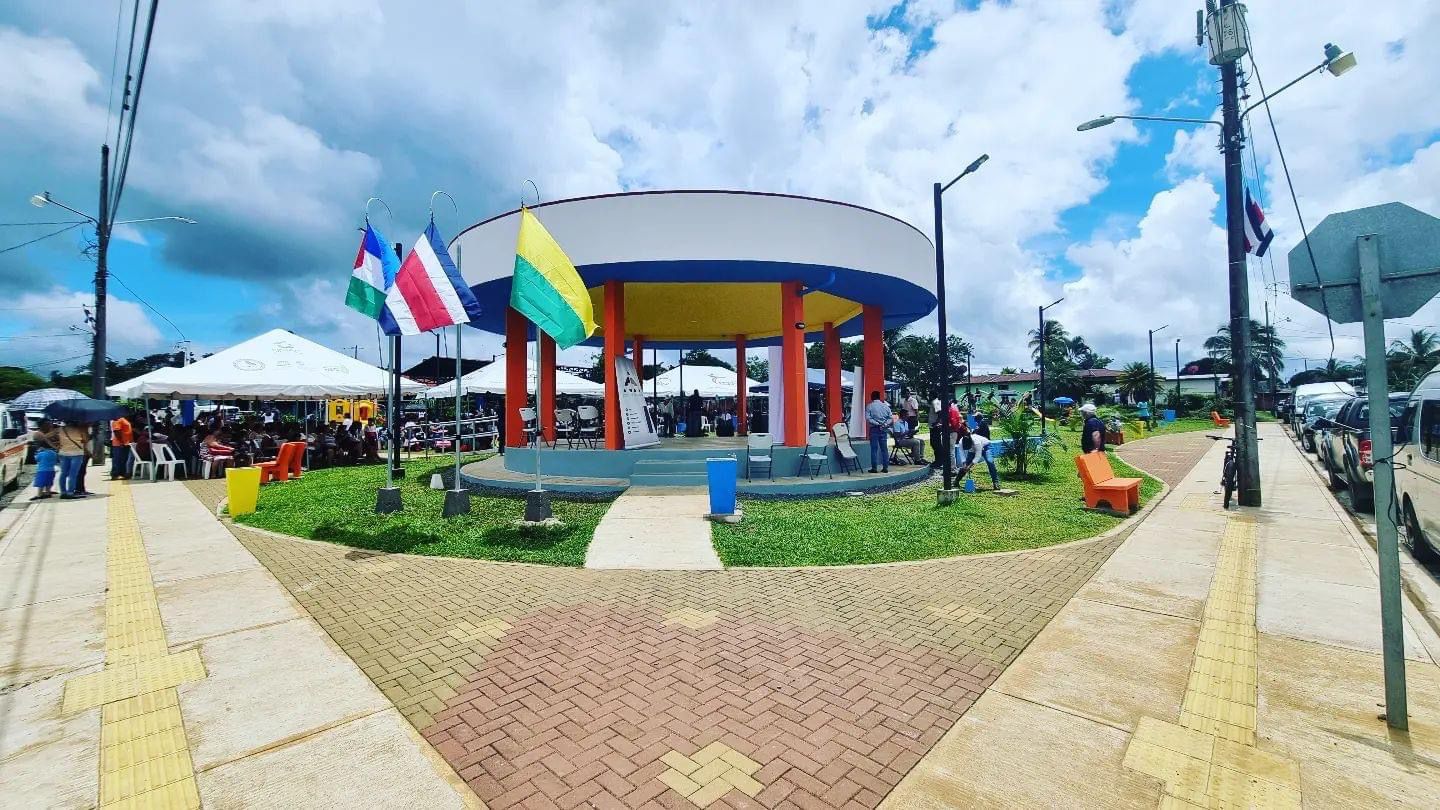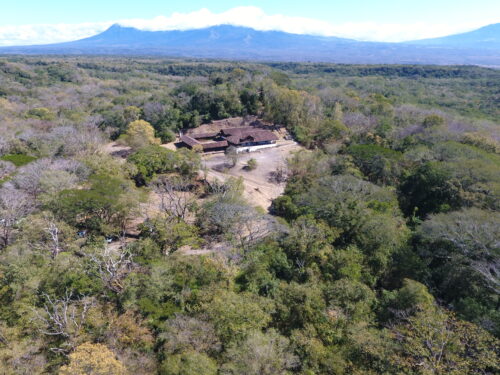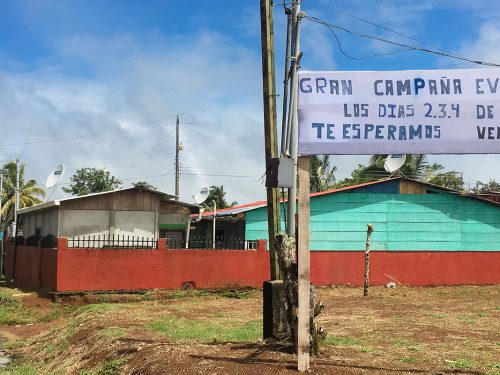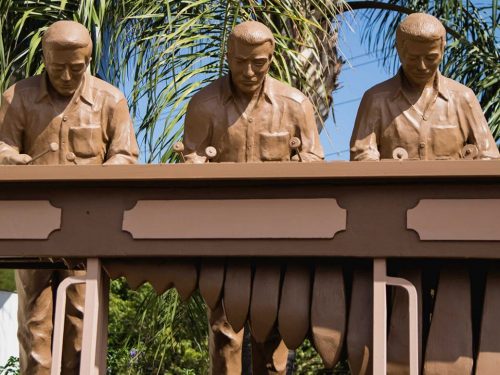
The inauguration of the Santa Cecilia park in La Cruz wouldn’t start for two hours yet and there were already more than 150 people waiting for the official opening ceremony. Neither the fresh cement nor the safety tape that surrounded the play area prevented Eliana Marin’s children and kids from the community from playing inside the playground.
September 10 was the day that the district of Santa Cecilia in La Cruz enjoyed a public park for the first time in the town’s history. That explains the excitement of the community, which has about 9000 inhabitants, according to the National Institute of Statistics and Censuses’ (Spanish acronym: INEC) demographic projection.
We’ve been longing for a park all our lives. Now my children ask me to go every day. It’s nice that we have this place that [I] didn’t have and always wanted since I was a child,” said Marin, who has lived in the district for more than 30 years.
But this isn’t just about the inauguration of a park. The community asked for it and its design was based on criteria established by a diverse group of 242 people from the town.
The park is located next to the Catholic Church and is the first project like this in the country built under the social urbanism methodology of the Municipal Center for Social Urbanism (Spanish acronym: CEMUS) of the National Association of Mayors and Administrations (Spanish acronym: ANAI). It was built in coordination with the U.S. Embassy’s Office for International Narcotics and Law Enforcement Affairs (INL), Citizen Security and Justice.
Social urbanism looks for projects that adapt to the needs and desires of communities, explained ANAI’s executive director, Jonathan Espinoza.
“Dialogue with the people of Santa Cecilia allowed us to find out what kind of park they wanted and thus prevent it from being as an architect, the municipality or a company imagined it,” said Espinoza.
Marin, along with her 8-year-old son and her 4-year-old daughter, participated in the process.
There were people of all ages. The children, with their imaginations, gave a lot of ideas, and the adults gave our opinions about the identity of the community, the colors of the park, and things like that,” said Marin.
The final result reflects what the community thought: a field to practice sports, children’s play equipment, exercise machines, green areas and a social meeting place.
One of CEMUS’ objectives is to create projects in conjunction with the communities and at a low cost. The municipality invested ₡80 million (about $130,000) in expropriating the land and ₡128 million (about $210,000) in the park’s construction.
A Park to Prevent Crime
There are two reasons why Eliana Marin’s family spent most of their time inside their house.
“There’s no better place than one’s house, but also because one didn’t feel safe in the town,” said Marin.
It isn’t just Marin’s family that feels afraid of being a victim of a crime. A report based on citizen perception from the Ministry of Public Security’s Sembremos Seguridad (Let’s Sow Safety) program revealed that downtown Santa Cecilia is among the ten neighborhoods in La Cruz with the most drug sales and vandalism.
The lack of public places is one of the reasons that make the district an unsafe place, the investigation specifies.
These results prompted the canton’s mayor, Luis Alonso Alan, to coordinate a strategy with CEMUS based on citizen participation to design the place that the community needed.
People dreamed of the park. They told us that their favorite place in Santa Cecilia was their house. Some young people even said that the town canteens were the only places they could go,” said Alan.
Is it far fetched to think that a park could be the key to fighting crime?
“A place that isn’t used is a place that is being opened up to criminal activity. There’s no better security and way of preventing crimes than a place that is used by the population,” believes Espinoza, ANAI’s executive director.
According to Marin, the street near the church looked empty before the park’s inauguration. “Now you go out calmer because there are many people in the area and groups of young ones playing sports, instead of being busy with other dangerous activities,” she remarked.







Comments